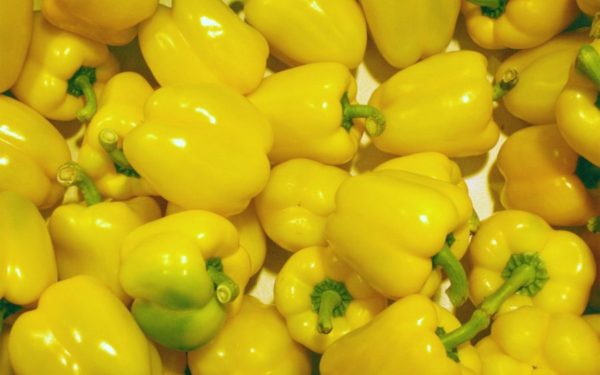
Pepper is an infrequent guest of vegetable gardens and horticultural plots in Russia. The small popularity of this vegetable is associated with its whimsicality: the plant grows poorly in the temperate zone and often dies during nighttime cooling. It is almost impossible to achieve a large crop that is good in taste without the use of a greenhouse.
However, for lovers of vegetable growing, the variety "Bison Yellow" was bred by selection. This type of pepper coexists well in the southern regions of Russia in the summer, and in other bands can be grown in a greenhouse without complex care measures. This plant should be taken into account by home-cooks and owners of their own restaurants.
Content
General characteristics of the variety: color, height, weight of fruits
The stalks of "Bison" are tall, with parameters from 90 to 100 cm. This is the highest rate among other varieties of pepper.
Leaves grow along the entire height of the stem; they are attached using branches with several leaves at once. At the base of the trunk, leaves can grow on their own. Such leaflets need to be cut to the kidney itself so that the nutrients do not go to provide unnecessary parts. With proper pruning, the fruits will be more juicy and crispy.

Features of growing in Russian conditions
"Bison" is suitable for free landing in the southern regions, where night temperatures in summer do not fall below minus 12-15 degrees. The minimum daily temperature is 20 degrees. At lower rates, yield decreases. Gardeners from other regions, more northern, should provide the plant with a greenhouse or other heated area.
In Russian conditions, the bushes need to be moistened periodically to avoid overheating and sunburn. Humidification can be done using special devices or a hose with a small dispenser.
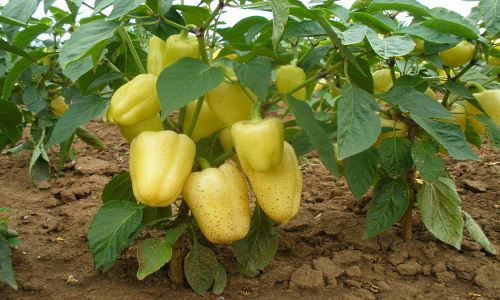
Dates of sowing and planting seedlings
Peppers can be planted in fertilizer-rich soil at the end of February. You can’t pour seeds directly into the ground, where they will grow in the summer. First you need to prepare several cassettes for growing seedlings in home or greenhouse conditions.
In cassettes, plants should be kept until warming. Landing usually occurs at the end of May. At this time, the vegetable is already beginning to set. It self-pollinates, therefore, no additional pollination measures are needed.
Before planting, it is necessary to prepare for plants not only special notches sprinkled with fertilizers, but also supporting elements. For small bushes, twigs up to 70 cm high are suitable. Further, the tops can be tied to a common trellis system.
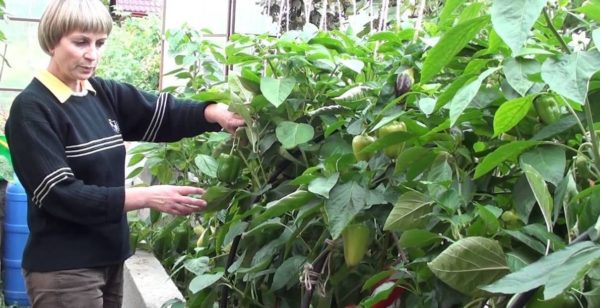
Productivity and ripening dates
"Bison" - an early ripe pepper. The first fruits appear already in 85-100 days after planting seeds. At the same time, the fruiting period is very long, lasting under favorable conditions until late autumn.
The vegetable yield is high. The whole stem from the first fork is strewn with peppercorns. The weight of one fruit reaches up to 200 grams - an excellent indicator for pepper. Pepper wall thickness is 0.5 cm. Fruits contain a lot of water, but the taste is saturated. Fruits are crispy and reach their maximum usability by July. In the southern regions of Russia, the first peppercorns can ripen already in mid-late May, and in the temperate zone, even when kept in greenhouses, fruit ripening begins in late June.
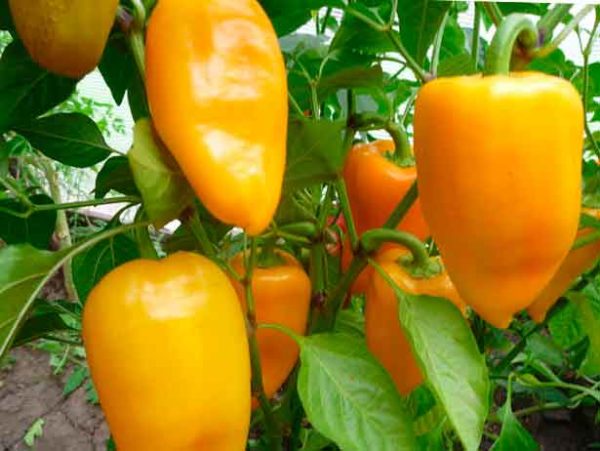
General care rules
To maintain health and a high rate of plant development, it is enough to follow standard care procedures. This is mainly watering and pruning excess leaves. Watering is carried out regularly, the frequency of watering must be determined depending on the drying speed of the soil.
As the plant grows, you need to re-conduct the garter of the bush so that it does not break under its own weight or due to the influence of air flows.
To protect the roots, it is necessary to carry out hilling. It is advisable to eliminate weeds close to the plant, not to plant the vegetable close to other useful crops. Close proximity to other plants will lead to the fact that pepper will lack nutrients.
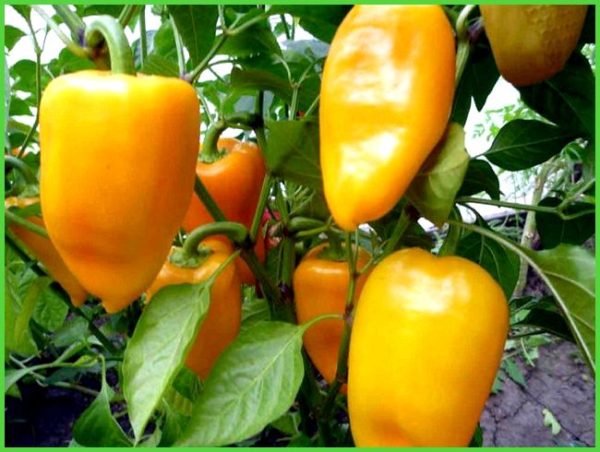
Advantages and disadvantages of Bison
The plant differs from other varieties of pepper in its high resistance to cold climates. The ancestor of the variety is a thermophilic variety from Mexico. However, the Bison does not require the same warm climatic conditions as its predecessor. And this is just one of the many benefits of the variety.
Other advantages:
- in the southern strip of Russia does not require a greenhouse and additional moisture;
- plant care includes standard procedures; expensive fertilizers and sophisticated techniques are not required;
- purchase and maintenance of seedlings are inexpensive;
- when selling, the product pays off well;
- the fruits are large, heavy, therefore suitable for any dishes;
- the variety has high palatability.
But the "Bison" also has negative aspects. The main drawback is the need to use a greenhouse in the northern parts of Russia and even in the temperate zone. Pepper cannot develop properly at temperatures below 20 degrees, and in these areas even in the summertime it is cool.
Other disadvantages:
- the plant has a large height of bushes that need to be constantly tied up;
- because of the height of the stems, there is a high risk of breaking them in the wind, because of which the crop will be lost.
It is better to buy a plant for breeders and gardeners with extensive experience who can provide it with the necessary conditions - periodic moistening and the correct temperature regime. If you grow peppers outside the greenhouse, the fruits will be undeveloped; when eaten, they will leave an unpleasant, bitter aftertaste.
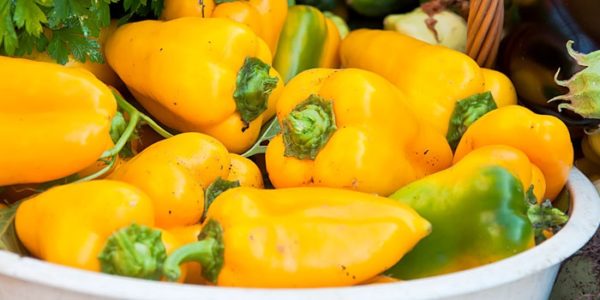
Plant use
"Bison" is suitable for home and commercial cultivation. Fruits that gradually ripen from late spring to late fall can be sold in batches. Pepper has an attractive appearance for the buyer - it is painted in bright yellow color, large, juicy. At the same time, the cost of seeds is minimal, therefore, the cultivation of "Bison" for sale pays off several times.
Fruits can be used for cooking.The list of dishes that are prepared from pepper is extensive:
- stuffed pepper;
- vegetable salad;
- baked pepper;
- roast;
- fried peppers;
- grilled pepper.
Pieces of pepper that have undergone the necessary processing (grilling is suitable for the best taste) can be used as part of sandwiches and sandwiches, burgers. Yellow "Bison" is popular in the restaurant business, modern networks of American cuisine.

Gardeners reviews
Antonina Semenovna, 56 years old, Moscow region:
“I've been growing Bison for three years in a small greenhouse. The variety is unpretentious, for high productivity, timely watering and fertilizer are enough. Last year I forgot to cut the lower leaves, but because of this I did not notice the difference in the weight of the fruits. ”
Alexey Petrovich, 40 years old, Perm, private vegetable grower:
“I tried to grow Yellow Bison for sale this year. The fruits began to ripen in June, and I sold them until mid-October. Customers say the taste is great. ”
Anastasia Viktorovna, 62 years old, Krasnodar:
“I have been growing Bison for a long time for cooking and freezing for the winter. I have it grows fine without a greenhouse. Delicious, the fruits are large, just tying the stems is uncomfortable. "
The vegetable has earned a positive assessment by gardeners and is deservedly popular in various regions of Russia. Bison is a great culture for commercial and home use. With a small amount of care, it gives worthy results.




 Calorie pepper stuffed with meat and rice - BZHU per 100 grams
Calorie pepper stuffed with meat and rice - BZHU per 100 grams Gorky pepper - the best varieties for open ground
Gorky pepper - the best varieties for open ground Hot pepper seeds - the best varieties for open ground and reviews
Hot pepper seeds - the best varieties for open ground and reviews Capsicum tincture for hair - how to use and reviews
Capsicum tincture for hair - how to use and reviews